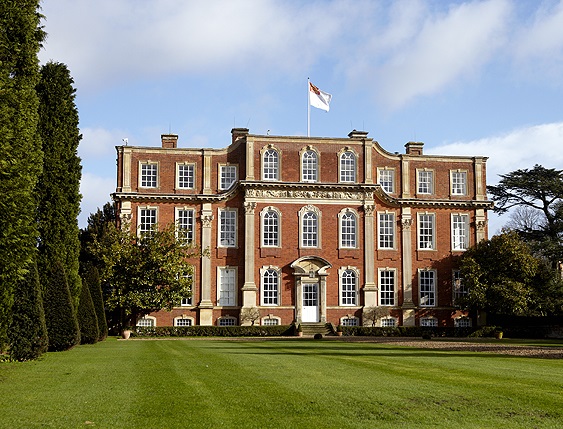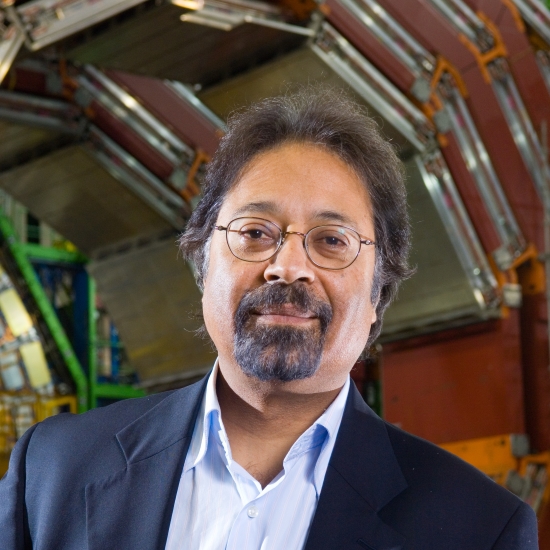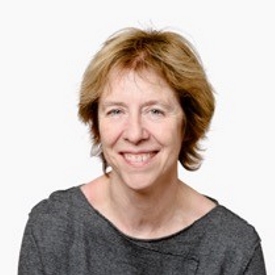Links to external sources may no longer work as intended. The content may not represent the latest thinking in this area or the Society’s current position on the topic.
Social programme: Fellows' research weekend

An opportunity for Fellows to meet and socialise whilst discovering and sharing science. Hosted by Professor John Pethica and Dame Jean Thomas.
Research Weekends at Chicheley Hall are part of the Fellows' Social Programme at the Society. These relaxed weekends allow Fellows and their guests to socialise, whilst also joining informal discussions and talks on a range of scientific topics.
Join hosts Professor John Pethica and Dame Jean Thomas for this weekend on 9 - 10 September 2017. Each day will feature a series of relaxed talks, lively discussion and opportunities to enjoy the surroundings of Chicheley Hall.
To cover some of the accommodation and catering costs we ask for a contribution of £85 from Fellows and Foreign Members. Guests of Fellows are very welcome, and we ask for a contribution from guests of £110.
To register for this Fellow's Research Weekend please complete the following survey. For further information please contact the Scientific Programmes team on fellowship@royalsociety.org.
Organisers
Schedule
| 13:45 - 14:35 |
Memory, simple concept but multiple systems in the brain
Memory is a critical process of the mind – enabling us to travel in time and defining our own individuality. It is often described as the “glue” that holds families and friends together. The “folk psychology” sense of how it works is that we store information initially in short-term memory and then some of this information gets selectively transferred to long-term memory; remembering is then a matter of reactivating these long-term traces – having a memory of some past event. There is a grain of truth in this informal sense of the process, but it is wrong. First of all, there are multiple forms of memory. Of these, short-term working memory which we use to keep of track of information during conversation or to do mental arithmetic is a relatively newly evolved form of memory which operates in parallel with long-term memory rather than as an input to it. Second, it now seems as though all attended information enters long-term memory from the outset but most of it is lost quite quickly – in a matter of hours. This period of time does, however, create a window of opportunity for some information to be selectively stabilized or “consolidated” to use the current neuroscience jargon. Memory consolidation itself is further subdivided into two inter-dependent processes, one operating primarily at the cellular level and likely involving the synthesis of “plasticity proteins” that stabilize the synaptic connections between neurons, while the other is more of a network process that links disparate brain regions and enables information to be added to existing networks of knowledge. On top of these complexities, there is the further distinction between “declarative” memory (which the philosopher Gilbert Ryle referred to as “knowing that”) and “procedural” memory (“knowing how”), mediated by very different neural networks in the brain and with quite distinct functions in cognition and behavior. At the more neurobiological level, there is a fascinating mix of anatomy (where in the brain?), physiology (what patterns of cellular activity trigger memory?), and molecular biology (what genes are transcribed? what proteins are involved? what signal transduction mechanisms?) that, at different levels of understanding, need to be brought into the picture. Only then will we have a mature understanding of the biology of memory linking the overarching psychological concept to the molecules of the mind.

Professor Richard Morris CBE FRS, University of Edinburgh, UK

Professor Richard Morris CBE FRS, University of Edinburgh, UK
"Richard Morris is Professor of Neuroscience at the University of Edinburgh and Director of the Centre for Cognitive and Neural Systems. He read Natural Sciences at the University of Cambridge followed by a D.Phil at Sussex University. He moved to Scotland in 1977 where he developed the watermaze in the Gatty Marine Laboratory at the University of St Andrews, moving in 1986 to the University of Edinburgh where he was appointed full Professor in 1993. His scientific interests are in the neurobiology of learning and memory, and his research included the first demonstration that hippocampal NMDA receptors are necessary for spatial learning, the development of the synaptic tagging and capture hypothesis of protein synthesis-dependent long-term potentiation and, most recently, work on the role of mental schemas in systems consolidation. He is an elected Fellow of the AAAS, of the American Academy of Arts and Sciences, and of the Norwegian Academy of Science and Letters, and was elected a Fellow of the Royal Society in 1997. He was appointed a CBE in 2007."
|
|---|---|
| 14:35 - 15:25 |
The shape of data
A year ago the Alan Turing Institute opened for business. Researchers from a variety of different disciplines and different career stages filled the newly equipped rooms on the second floor of the British Library. It has been an exciting journey in which the Turing has defined its space in the ever growing data science landscape. In this presentation a glimpse of what is happening at the Turing will be given and it will explain how topology, a branch of pure mathematics, can give new insights in data. 
Professor Ulrike Tillmann FRS, University of Oxford, UK

Professor Ulrike Tillmann FRS, University of Oxford, UKUlrike Tillmann is a mathematician who has worked in algebraic topology, K-theory, and non-commutative geometry. Her work on the moduli spaces of surfaces and manifolds of higher dimensions has been motivated by problems in quantum physics and string theory. More recently her work has also been motivated by the challenges in data science. Ulrike was awarded the Whitehead Prize by the London Mathematical Society (LMS) in 2004, a Bessel-Humboldt Forschungs Preis in 2008, and was elected a member of the Leopoldina, the German National Academy, in 2017. She is Professor of Mathematics at the University of Oxford, Professorial Fellow of Merton College, and a scientific board member of the International Centre for Mathematical Sciences, and the Mathematisches Forschungsinstitut Oberwolfach. She served as a Member of Council for the LMS from 2008–2014. Currently she chairs the Programme Committee of the Alan Turing Institute. |
| 15:45 - 16:35 |
The Large Hadron Collider Project: Interwoven complexity of a scientific project for fundamental discoveries
The Large Hadron Collider (LHC) at CERN is designed to probe Nature moments after the Big Bang to tackle the questions about the origin, evolution and composition of our universe. The discovery in July 2012 of the Higgs boson, by the ATLAS and CMS experiments at the Large Hadron Collider (LHC), though completing the particle content of the standard model (SM) of particle physics, a theory that describes our visible universe in exquisite detail, leaves many questions unanswered. The LHC Project, the accelerator and the experiments, comprises quite complex instruments using a wide range of engineering aspects, many pushed to the limits. This talk will try to tease out these varied aspects of the Project, from civil, mechanical, cryogenics, electronic/electrical, and software engineering, computing and data handling, instrumentation, to data analysis, that make this project one of the most complex scientific endeavours. All had to work in an efficient unison to enable the discovery of the Higgs boson. 
Professor Tejinder Virdee FRS, Imperial College London, UK

Professor Tejinder Virdee FRS, Imperial College London, UKTejinder (Jim) Virdee is Professor of Physics at Imperial College, London. After the UA1 experiment (1990), where W and Z bosons were discovered, Virdee concentrated on the physics and experimentation at CERN’s Large Hadron Collider. He is one of the founding members of the Compact Muon Solenoid Collaboration (CMS) at the LHC. Virdee has played a major role in all phases of the experiment, from conception and design, through construction to the extraction of science that have already lasted around 25 years. He pioneered some of the techniques used in its calorimeters crucial for the discovery of a Higgs boson announced by the CMS experiment in July 2012, along with the sister experiment ATLAS. Virdee was the Spokesperson of the CMS Collaboration for three years, from 2007, that included the start of collision data taking, and was its Deputy Spokesperson from 1993 to 2006. Virdee’s current work involves studies of the newly found Higgs boson, search for physics beyond the standard model of particle physics and the definition of the upgraded CMS detector for very high luminosity LHC running. Amongst the prizes he has won is the 2013 European Physical Society-HEPP prize co-awarded for his “pioneering and outstanding leadership role in the making of the CMS experiment”. Virdee was made Knight Bachelor in 2014. |
| 18:00 - 18:50 |
Halving premature death
Death in old age is inevitable, but death before old age is not. Except where HIV or political disturbances predominated, mortality rates have been decreasing for decades, helped by sanitation, health care, and social changes. If disease control keeps progressing, then within the next few decades—except where disasters or new epidemics supervene—under-50 mortality and under-70 mortality should fall to less than half of the 2010 global risks of, respectively, 15% and 36%. Non-communicable diseases, such as cancer, stroke, heart disease, and emphysema, cause about 1/4 of all deaths before age 50, plus four-fifths of those at ages 50 to 69, but although the global population is rising, under-70 NCD death rates are falling by about 15% per decade. The most important external factor is smoking, which in 2010 was causing about a quarter of all cancer deaths in the European Union and 30% of all cancer deaths in the US. Options for reducing this and other major cancer causes will be reviewed. 
Sir Richard Peto FMedSci FRS, University of Oxford, UK

Sir Richard Peto FMedSci FRS, University of Oxford, UKRichard Peto has shaped the way modern clinical trials and population studies are carried out worldwide. His own research has saved countless lives by quantifying and highlighting the preventable causes of cancer and cardiovascular disease — smoking, in particular — and by identifying optimum treatment choices for both. Richard pioneered the use and analysis of ‘biggest-possible’ observational studies and clinical trials. By studying tens of thousands of individuals he showed that small differences in treatment effects could be revealed for the first time. For diseases as common as cancer, these small differences have the potential to save millions of lives. His studies have made medical history; he clearly linked smoking with cancer and predicted the burden of smoking-related ill health in China and across the world. By analysing collections of previous studies, and running massive clinical trials, he has informed modern treatment strategies for heart attack, stroke and breast cancer. |
|---|
| 10:15 - 11:05 |
Making sense of tissue complexity by single cell transcriptomics
The Human Cell Atlas (HCA) (www.humancellatlas.org) is an international initiative to create comprehensive reference maps of all human cells as a basis for understanding health and disease. Given the accessibility of skin, its well-defined spatial organisation, and the close clinical-scientific collaborations that already exist amongst skin researchers, this tissue represents an ideal project for the HCA. I will discuss some of the logistical and computational challenges of creating a skin atlas, as well as the potential benefits for discovery science. 
Professor Fiona Watt FMedSci FRS, King's College London, UK

Professor Fiona Watt FMedSci FRS, King's College London, UKFiona Watt obtained her first degree from Cambridge University and her DPhil, in cell biology, from the University of Oxford. She was a postdoc at MIT, where she first began studying differentiation and tissue organisation in mammalian epidermis. She established her first research group at the Kennedy Institute for Rheumatology and then spent 20 years at the CRUK London Research Institute (now part of the Francis Crick Institute). She helped to establish the CRUK Cambridge Research Institute and the Wellcome Trust Centre for Stem Cell Research and in 2012 she moved to King's College London to found the Centre for Stem Cells and Regenerative Medicine. Fiona Watt is a Fellow of the Royal Society, a Fellow of the Academy of Medical Sciences and an Honorary Foreign Member of the American Academy of Arts and Sciences. Her awards include the American Society for Cell Biology (ASCB) Women in Cell Biology Senior Award, the Hunterian Society Medal and the FEBS/EMBO Women in Science Award. In 2016 she was awarded Doctor Honoris Causa of the Universidad Autonoma de Madrid. |
|---|---|
| 11:05 - 11:55 |
Be careful what you ask the genie for. Practical approaches to distilling meaning
Causality, correlation, generalization, interpretation, stationarity, phase change and the curse of dimensionality can lead you astray in complex systems. These issues can pose practical problems in areas such as Big data, machine learning and complex system analysis. Such questions affect disciplines as diverse as genomics to financial stability and policy decisions from legal to healthcare and regulation. 
Dr Michael Lynch OBE FREng FRS, Invoke Capital, UK

Dr Michael Lynch OBE FREng FRS, Invoke Capital, UKFuelled by a scientific background in signal processing and pattern recognition, Michael Lynch’s entrepreneurship has allowed him to successfully make the leap from academia to business. Notably, Michael co-founded Autonomy in Cambridge in 1996 — the UK’s largest software company until acquired by Hewlett-Packard for $11 billion in 2011. Autonomy was built on technology that uses Bayesian methods to help organisations search and sort through unstructured information, including emails and phone records, by looking for patterns where there appear to be none. Michael led the company for 15 years, during which he was awarded an OBE for services to enterprise. Most recently, Michael raised $1 billion through Invoke Capital, a technology investment and advisory company. In addition to providing funding, he offers inspiration and mentoring to inventors in the fields of engineering and technology. Additionally, as a member of the Council for Science and Technology, he is an adviser to the UK government. |


